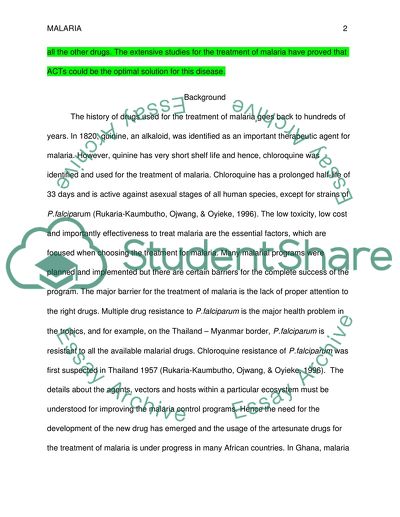Cite this document
(Effective Ways to Cure Malaria Book Report/Review, n.d.)
Effective Ways to Cure Malaria Book Report/Review. Retrieved from https://studentshare.org/medical-science/1767282-is-artemisinin-based-combination-therapies-acts-a-more-efficacy-way-to-cure-malaria-when-comparing-it-with-chloroquine-therapies
Effective Ways to Cure Malaria Book Report/Review. Retrieved from https://studentshare.org/medical-science/1767282-is-artemisinin-based-combination-therapies-acts-a-more-efficacy-way-to-cure-malaria-when-comparing-it-with-chloroquine-therapies
(Effective Ways to Cure Malaria Book Report/Review)
Effective Ways to Cure Malaria Book Report/Review. https://studentshare.org/medical-science/1767282-is-artemisinin-based-combination-therapies-acts-a-more-efficacy-way-to-cure-malaria-when-comparing-it-with-chloroquine-therapies.
Effective Ways to Cure Malaria Book Report/Review. https://studentshare.org/medical-science/1767282-is-artemisinin-based-combination-therapies-acts-a-more-efficacy-way-to-cure-malaria-when-comparing-it-with-chloroquine-therapies.
“Effective Ways to Cure Malaria Book Report/Review”, n.d. https://studentshare.org/medical-science/1767282-is-artemisinin-based-combination-therapies-acts-a-more-efficacy-way-to-cure-malaria-when-comparing-it-with-chloroquine-therapies.


